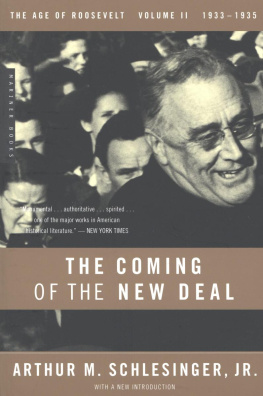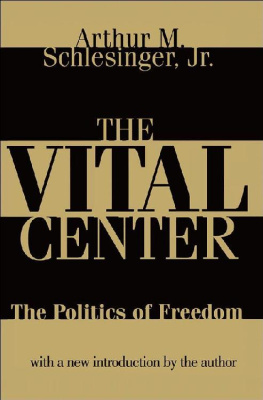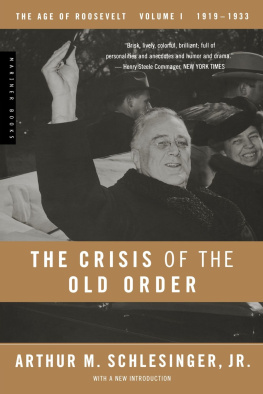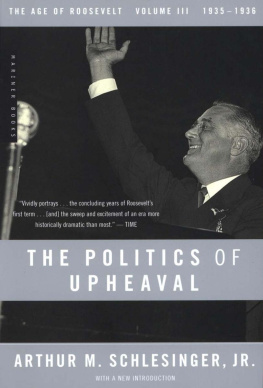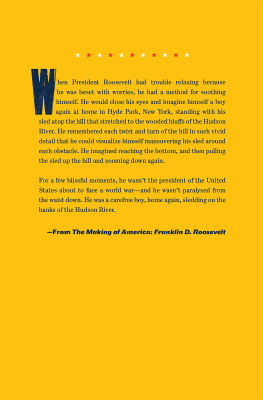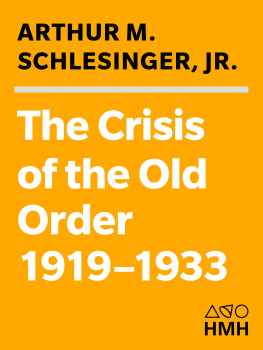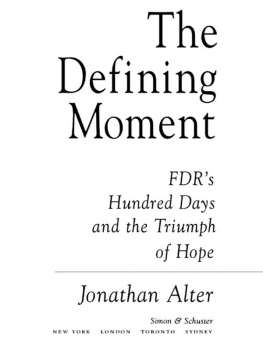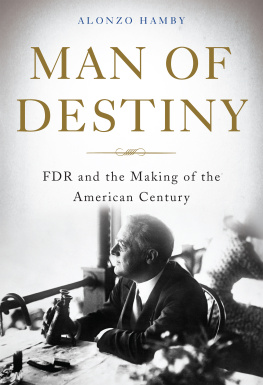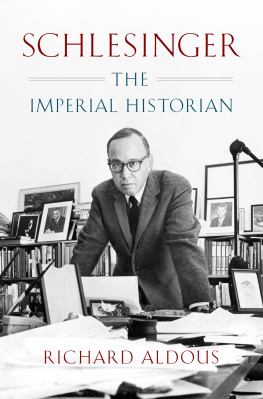
Table of Contents
For my mother and father
FIRST MARINER BOOKS EDITION 2003
Copyright 1958 by Arthur M. Schlesinger, Jr.
Copyright renewed 1986 by Arthur M. Schlesinger, Jr.
Foreword to the Mariner Edition copyright 2003 by Arthur M. Schlesinger, Jr.
All rights reserved
For information about permission to reproduce selections from this book, write to Permissions, Houghton Mifflin Company, 215 Park Avenue South, New York, New York 10003.
Visit our Web site: www.houghtonmifflinbooks.com.
Library of Congress Cataloging-in-Publication Data is available.
ISBN 0-618-34086-6 (pbk)
ISBN 978-0-618-34086-6 (pbk)
Printed in the United States of America
DOC 10 9 8 7 6 5 4 3
Foreword to the Mariner Edition
T HE WALL STREET BOOM of the 1920s produced a season of euphoria christened the New Era. The New Era was the prediction and confident expectation of a permanent plateau of prosperity. In August 1928 Herbert Hoover even foresaw the day, should the voters send him to the White House, when poverty would be banished from the nation. Then the stock market crash in October 1929 exposed the New Era as a mirage.
Though Americans had long been accustomed to depressions every twenty years or so, they had never experienced anything like the depression that followed the Wall Street crash. The Great Depression, the mother of all depressions, had begun. By 1932, a quarter of the labor force was looking desperately for work; the gross domestic product was cut in half; the banking system was on the brink of collapse; private charity and local relief were overcome by the rising flood of the unemployed.
No one knew what to do. Doubts were spreading about the very survivability of the free system; maybe Karl Marx had been right in his dark prophecy that capitalism would be destroyed by its own contradictions. Abroad, Hider and Mussolini vied with Stalin in crying that liberal democracy was finished, done for, kaput.
The great strength of liberal democracy, however, lies in its capacity for self-correction. Henry Adams, the most brilliant of American historians, once said the president of the United States resembles the commander of a ship at sea. He must have a helm to grasp, a course to steer, a port to seek. When the country is befogged and headed for the rocks, new leadership may emerge to change the course. Disaster creates a demand for new directions. Thus the era of the robber barons brought the Populists and Progressives into existence. In the same way the New Era became the midwife of the New Deal.
Nineteen thirty-three was a presidential year. Governor Franklin Delano Roosevelt of New York was among those seeking the Democratic nomination. Economic orthodoxy, Roosevelt felt, had been tried and had failed. The country needs and, unless I mistake its temper, the country demands bold, persistent experimentation, he said in a speech at Oglethorpe University. It is common sense to take a method and try it: If it fails, admit it frankly and try another. But above all, try something. That, apart from the bit about admitting failure frankly, was to be the rule in his administration.
He won the nomination, but not everyone was impressed. Walter Lippmann, the premier journalist of the day, famously dismissed Roosevelt in 1932 as a pleasant man who, without any important qualifications for the office, would very much like to be President. But Roosevelt won the election, and his inaugural address on March 4, 1933the only thing we have to fear is fear itself"surprised and electrified the nation.
When he sent the Agricultural Adjustment Act to Capitol Hill, he warned Congress, I tell you frankly that it is a new and untrod path, but I tell you with equal frankness that an unprecedented condition calls for the trial of new means. Experimentation required ideas, and it required experimenters. The Great Depression provided both. Thoughtful men (and a few women) analyzed where the New Era had gone wrong and, with opportunities foreclosed by depression, were eager for public service. Probably never before had so many bright people descended on Washington to work for the national government.
Vigorous personalities in FDRs supporting cast brought color and excitement to the nations capital. When this volume was first published, their names were still well knownHarry Hopkins, Harold Ickes, Henry Wallace, Cordell Hull, Henry Morgenthau, Frances Perkins (the first woman to serve in the cabinet), Felix Frankfurter, Adolf Berle and Rex Tugwell, Sumner Welles and Averell Harriman, Ben Cohen and Tom Corcoran, Joseph P. Kennedy and William O. Douglas, Jesse Jones, James F. Byrnes, David Lilienthal, et al. What a formidable and dashing group they were! Few, alas, are household words seventy years later. Still, I hope that these pages may contain enough about their characters and their contributions, their defeats and their victories, to explain their impact on those agitated times. I had the great luck to know most of them and to interview some of them, and I trust that their eyewitness testimony imparts a certain immediacy to the narrative.
Presiding over this unruly crowd with tranquil and charming ruthlessness was the new president. His first hundred days were a period of intense drama and prodigious legislation. Under the pressure of national crisis, FDR came into his own, combining eloquent idealism with astute realism. Walter Lippmann changed his mind. At the end of February, he wrote in the summer of 1933, we were a congeries of disorderly panic-stricken mobs and factions. In the hundred days from March to June we became again an organized nation confident of our power to provide for our own security and to control our own destiny.
I try to analyze FDRs unformulated administrative philosophy in the last section of this work, Evolution of the Presidency. He was more interested in creativity than consensus. He did not mind competition and rivalry within his administration; he rather encouraged it. It kept everyone on his (or, in the case of Madame Perkins, her) toes; it assured him of diverse sources of information; it assured him too that the vital decisions were passed upward to the Oval Office. His administrative style violated the textbook orthodoxy of regularity and order, but it worked for him. As one of his directors of the budget wryly observed, FDR was an artist in government.
He had not in his Harvard years taken a course with William James, but he was an innate and visceral pluralist and pragmatist. Hence his New Deal appalled monists and ideologues as disjointed and incoherent, a jumble of conflicting agencies and purposes. FDR rejected abstraction, dogma, and rigid ideology. He rejected especially the categorical imperative of either-or either the laissez-faire market or totalitarianism.
We can have a free country or a socialistic one, said Ogden Mills, President Hoovers last secretary of the treasury. We cannot have both. Our economic system cannot be half free and half socialistic....There is no middle ground. Hoover was no less doctrinaire: Even partial regimentation cannot be made to work and still maintain live democratic institutions. Critics on the left were equally dogmatic. Either the nation must put up with the confusions and miseries of an essentially unregulated capitalism, proclaimed the New Republic in 1935, or it must prepare to supersede capitalism and socialism. There is no longer a feasible middle course. Said the veteran radical Lincoln Steffens, There is no third way.
Radicalism, like conservatism, thus ended up in the bleak domain of either-or. From the ideological perspective, rightists viewed the New Deal as nourishing the seeds of communism, leftists as nourishing the seeds of fascism. William Randolph Hearst, the right-wing publisher, saw FDRs taxation program as essentially Communism to be ascribed to a composite personality which might be labeled Stalin Delano Roosevelt. I. F. Stone, the left-wing journalist, said, Roosevelts policies can be welded into a consistent whole only on the basis of one hypothesis ... that Mr. Roosevelt intends to move toward fascism.
Next page
